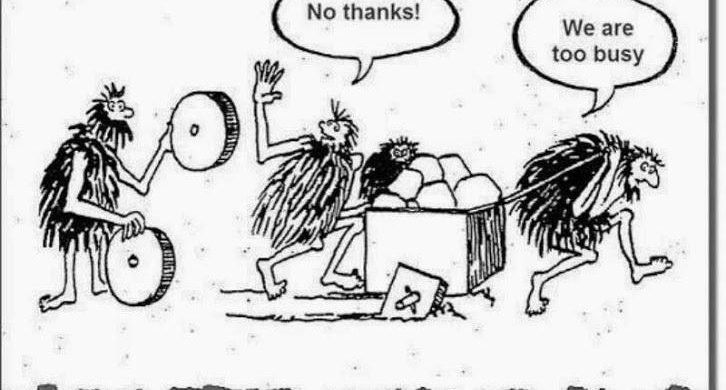How to Sell AI Software in a Complex and Competitive Market

As someone who has been selling AI for nearly a decade now, I can honestly tell you that the short answer is "Yes! You can sell AI!" The longer, more realistic answer is "Yes, but it's hard because one size fits all methods don't apply well."
AI, artificial intelligence, or machine learning projects have an 85% failure rate. Either they struggle to deliver or fail outright. This failure rate is staggering and I can understand why many corporations are cautious about spending millions of dollars on your AI product.
Coupled with the fact that a few people in an organization understand how to use AI or even implement it, you'll face strong headwinds in this market. Selling your product will be an uphill battle.
I remember a former account executive I worked with that talked about the amazing "upside in AI" only to be let go when he didn't sell anything for several quarters. Nearly every single salesperson, myself included, underestimated the complexity and selling cycle in the AI market.
A lot of these mistakes come from a fundamental misunderstanding of what AI (machine learning, deep learning, etc) is: a methodology to optimize a process.
The Selling Process
Businesses, companies, and people in general love processes. Salespeople are no different; every single salesperson I've ever worked with has had their sales process. Sometimes it's part of a larger go-to-market (GTM) strategy or a method that worked for the latest CRO in your organization.
There are books and research reports written about the latest sales process. There's solution selling, value selling, and whatever will come after this process de jour. Then a lucky sales guy or gal who raked in millions using this process will end up writing a book and becoming the next Tony Robbins.
If we strip away these processes to the bone we find that selling is nothing more than an exchange of goods or services between two or more parties for some negotiated price. Your startup or company builds AI software and corporation XYZ wants to acquire some AI software for their needs.

If the sales team is successful in selling that product or service, upper management will ask them to accelerate the sales process. They'll ask them to shorten the selling cycle time and to sell more. How does the sales team react? By creating a sales process.
That's what every CRO and sales leader wants, a repeatable and scalable sales process to forecast sales and revenues.
This leads the sales teams to want to commoditize the product your company offers so it can be a repeatable selling "widget." If you generate 100 widgets and sell them for $10 each, then your gross income will be $1,000. Likewise, if you have 5 salespeople and generate $1,000,000 in revenue, logic dictates that 10 salespeople would generate $2,000,000.
The problem is, this geometric formula doesn't work well in the AI business. Too often your software must be integrated because it's complex, just ask C3.ai. They're being accused of fraud because their product is coupled with a lot of services.
In a scathing letter to C3.ai auditor Deloitte & Touche, on which the Securities and Exchange Commission (SEC) was copied, Kerrisdale accused the company of multiple accounting irregularities, making the case that C3.ai was inflating its revenue and gross margin in order to appear as if it's a software subscription company, even though it's really a consulting services-oriented business. - via Motley Fool
Selling AI software as a widget or subscription is damn hard. Have some companies been successful at it? Yes, but they sell a service that's powered by their AI.
The reason is this, AI software is a bunch of tools. AutoML, Deep Learning, Feature Stores, etc are the hammers, saws, and nails in your toolbox. You use them to build a custom house on a custom lot. They're not a cookie-cutter house you buy from a developer in Rio Rancho.
You can't buy a binary classification model out of the box. Every model you want to use must be trained, tested, and evaluated on your data. It has to be customized for your specific needs and your specific business goals.
Every bit of "AI technology" you use, to be effective, has to be customized. You have to build your custom internal processes as you would that custom house, by spending the time and energy into understanding how it's going to be built, what materials you'll use to decorate the walls, and how you turn the key in the door when it's all done.
This custom approach will increase your odds of success, not guarantee it, and will drive any sales team crazy. On the surface, this type of selling appears not to be repeatable. Or is it?
The siren song of open source
Open source is fantastic. I use many open source products in my daily tasks and for my personal projects. The time and dedication that open source maintainers provide - for free - is invaluable and inspiring.
Yet, open source isn't free. There's a time component attached to all the work the creators and maintainers do. Some work on the project as time permits, others form a "team" to do it as time permits, and some attempt to sell a support license to end users, corporate or otherwise.
In my experience selling support isn't overly successful, but there is one caveat: it can be if you know how to do it. It's not as simple as "Here's the source code and if you need enterprise support, it'll cost you X." That's what a lot of open source based companies do and it leads to thin margins for them.
To get a better perspective you have to look at it from the viewpoint of any company. The goal of any company is to maximize shareholder wealth. Maximizing wealth is done by keeping input costs low and profits high. Open source software works well here because they can use it to build internal systems for free.
They have developers, data scientists, and experts to wire everything together for the company. The only financial outlay by the corporation is everyone's salary and benefits. When times get tough, they can lay off those workers and continue to reap the benefit of the open source software.
That's a win-win scenario for the corporation but a lose-lose for the open source project. It's the nature of the beast, open source, while we all say isn't free, gets exploited regularly.
I wrote about open source exploitation on my other blog and highlighted two instances of open source projects that were exploited.
So how do you make money in the AI world, whether it's open source based or not? Can you sell AI at all? The solution, in my mind, is something similar to the Red Hat model of open source.
The curious case of Red Hat
RedHat has been successful in taking the open source Linux kernel and turning it into the defacto enterprise Linux distribution. Not only did they IPO and make a ton of money from packaging the open source kernel, they even built MORE open source products around that backbone.
They generated many new open source intellectual properties that they became a hub for the Linux operating system. They created a center of gravity that corporations couldn't ignore. A combination of enterprise support plus enterprise applications on top of an open source kernel generated a lot of revenue for them.
Yes, they gave away a lot of free stuff but created enterprise products that were too enticing to pass up. That's the success and many open source companies want to emulate but fail. The key takeaway from here is this, the backbone matters.
The backbone matters for any open source project or company to grow and scale. What they create as an open source backbone (AI or otherwise) can be the launching point for future successful revenue growth.
The trick is to think about how you're going to make money with it before you release your open source backbone.
Selling the open source backbone
There are some fantastic tools out there. Numpy is amazing. PyTorch and Huggingface transformers are the BOMB! Then there's H2O-3 and Scikit-Learn. There are even open source feature stores and if I were to start a startup I'd be looking through Apache.org for all the tools I need to build my startup.
It's easier today to create a startup from open source software than ever before, as it should be. Yet, how would you monetize your fledgling software? How would sell your open source backbone?
You can do it two ways: sell its output as a service or build enterprise capabilities around the backbone.
Selling a service
There's no doubt that many companies use open source tools and backbones to sell a service to customers. I've met with countless entrepreneurs that use open source to sell leads from their customized AI lead generation models. Others use open source to sell fraud services to businesses in a B2B fashion.
I expect large language models (LLMs) to be used in this fashion because a startup could train a custom LLM, deploy it, and sell a subscription service for customers to log in and use it.
When selling a service, powered by AI in this fashion, startups can generate good revenues. Any startup will do well with this approach but can they generate millions of dollars in revenue from a single sale? Probably not. For that, you'll need to focus on Fortune 1000 enterprises and offer them something they can't get elsewhere and for free.
The ideas for revenue generation are endless here, you just need to think about the market you want to sell into, prepare the right service and GTM, and then execute.
Selling the enterprise version
Selling an enterprise version of your open source backbone is harder than selling an AI-powered service but this is where the multimillion-dollar deals are made. This is the elusive Red Hat model that if successfully executed will generate millions of dollars in revenue.
You will, undoubtedly, be in competition with your free open source backbone. You will need to create additional tools or services compelling enough to get an enterprise to buy them. You need to create an entire ecosystem of enterprise grade software around your open source backbone.
Then and only then can you successfully monetize open source and scale your sales process.
The trick here is to figure out what applications and services you need to create around your backbone. A lot of startups inadvertently handcuff themselves at this stage because they give away too much in the open source version. They block themselves because they provide too much for free and enterprises will capitalize on that.
Then if you pivot away from your open source license you can kill your community and be labeled a sellout, unless you can prove to the community that you're being exploited.
Any startup founder with a popular open source backbone needs to think hard and fast as to what they want to provide to the community. In a nutshell, it should be enough for any community users (or enterprise) to build their AI processes and systems but not easy enough to save costs.
You can provide the community with all the hammers, saws, and drills they need to build their custom house by themselves or you can sell them your enterprise version and get the job done quicker and at a lower cost of ownership.
Remember, free is not necessarily free. The cost to build everything yourself using open source has to be higher than buying your enterprise version.
You'll be able to sell your AI successfully once you figured out where the buy vs build intersection is.
How to sell AI software
Sears used to sell kit homes out of their catalog. With a bit of elbow grease, you could order a house, put it on a lot you bought and prepared, and "connect it" together.

I'm sure there are a few kit houses that had some problems being installed and corners were probably cut to get things to fit. Yet, this kit home is what a lot of salespeople want to sell because it's easy to understand and scale.
What's hidden behind this kit house are the endless hours by craftspeople using their hammers, saws, and drills to put it together before it was delivered to your property.
Additionally, there's the cost to buy the land, the cost to bring the utilities to your building site, and all the permits to build it. The total cost of ownership for these kit houses was always greater than the cost of the house.
This is the same with AI projects, there's always a higher total cost of ownership than what you originally expected and I suspect that this is one reason why so many projects fail. Because AI is complex, people don't see all the hidden costs. They don't realize that using AI in your company is an active process, not a passive process. You need to constantly tune, refine, re-deploy, etc.
AI is nothing more than a methodology to optimize a process.
- Are you interested in lower defects on your production line? You'll need an image-processing AI pipeline to scan and alert you to errors
- Do you need to get better leads from your sales data? You'll need to build an AI power lead generation process that uses your data
- Want to figure out a better marketing mix? Deploy a marketing mix model
- Want to write better responses to RFPs or proposals? Train your own LLM on your corpus of old responses to write responses for the next RFP
The entire application of AI is to streamline, optimize, and maximize revenues while minimizing costs. It's to find the global maximum and minimum as your company operates.
One can argue this is a combination of solution and value selling, and you'd be right, but it's not 100% correct. What you're selling is your expertise as the architect or project manager to help an enterprise build its custom home. You have the experience to know when to order the tile, when to use a specific tool, or where the gotchas are.
Does this sound like services? Yes, it does. Are services scalable? No, they're not. Why do we need services in the first place? Good question.
Your enterprise backbone will need to be enterprise-grade and ready to limit the number of services you provide your customer to get up and running. Too often this is an afterthought by engineering teams. Too often this becomes a blocker.
I always advocate for a frictionless approach to selling. Your enterprise AI software must include batteries and work out of the box. It has to give an end-to-end flow and must be bug free and stable.
Building an enterprise version of your backbone requires a lot of time and effort and the costs of developer time and materials can be cost prohibitive for a small startup.
Strategically, if I created a startup today this is what I do:
- Think about what the market needs and wants
- Use open source tools to build a service and generate income
- Give back to the open source community (co-create, pay, etc)
- Using the revenues from the service to build an open source backbone for my specific market
- Create an enterprise version of the said backbone with compelling applications and low services footprints
- Sell to enterprises and provide services to help them wire it all together
- Evaluate the sales cycle to create a custom sales process
My strategy is twofold, build a consumable service to get revenue in the door and then build an enterprise product based on an open source backbone - hopefully, the one I create.
Generating the revenues will give me a chance to raise money and build out an engineering team to take on the open source backbone and enterprise product. It will also allow me to give back to the open source community because I know that free isn't free at all.
The moral of the selling AI story
The moral of this story is that yes, you can sell AI but a lot of thought - up front - needs to take place. The success of your sales organization happens downstream of your initial GTM and product strategy. It's almost as if the sales process doesn't matter. It's almost as if your sales are a byproduct of sound organizational strategy.
So yes, you can sell AI, just not the way you think it should be.
Authors note: I use the term AI as an encompassing term for all things machine learning and data science. Also, this doesn't article doesn't represent the views of my employer. It's all my wild crazy ideas.





Member discussion